Find Help
More Items From Ergsy search
-

Workplace Pension UK | Pros and Cons | GET FREE MONEY FROM YOUR EMPLOYER!
Relevance: 100%
-

How to Buy a Car UK | Pros and Cons | PCP vs HP vs Leasing
Relevance: 58%
-
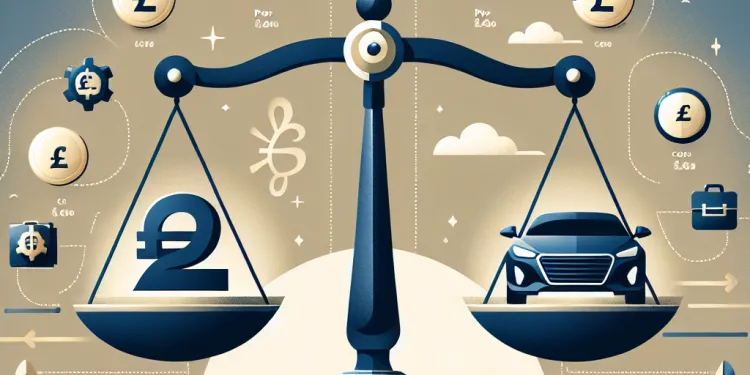
What are the pros and cons of leasing a car?
Relevance: 48%
-

Can my employer provide pension advice?
Relevance: 44%
-
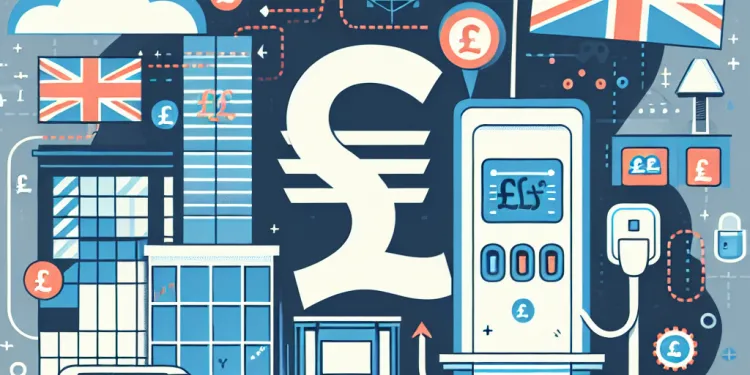
How much does the Workplace Charging Scheme cover?
Relevance: 30%
-

Can I defer my basic State Pension?
Relevance: 29%
-

What is a defined benefit pension scheme?
Relevance: 28%
-
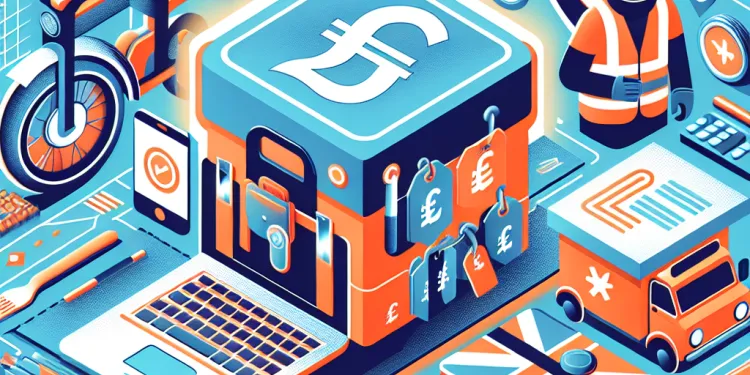
What are my rights regarding workplace safety as a gig worker?
Relevance: 28%
-

NHS Pensions | All you need to know
Relevance: 27%
-
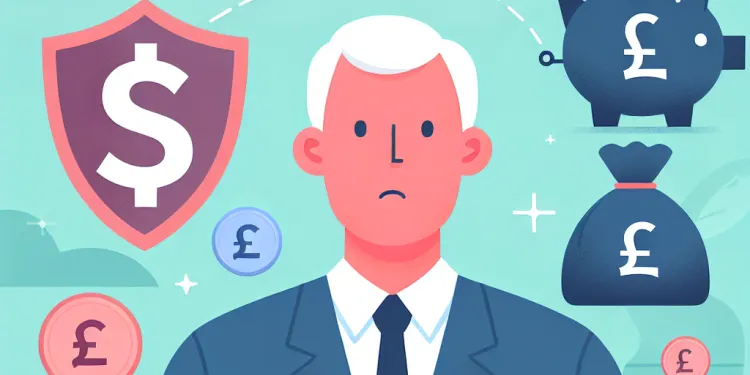
What is the Pension Protection Fund?
Relevance: 26%
-

What is the Workplace Charging Scheme?
Relevance: 26%
-

Will I qualify for the new state pension?
Relevance: 26%
-

What Happens When Pensions Go Bust! | Pension System Collapse UK
Relevance: 26%
-

How does insolvency impact pension funds?
Relevance: 26%
-

Where can I get reliable pensions advice?
Relevance: 26%
-

Are defined contribution pensions protected if the provider goes bust?
Relevance: 26%
-

What role does government regulation play in protecting pensions?
Relevance: 25%
-

What is a defined contribution pension scheme?
Relevance: 25%
-

How will the changes in pension age affect retirement planning?
Relevance: 25%
-

Is the HMRC Employer Bulletin relevant for small businesses?
Relevance: 25%
-

Why do pension funds go bust?
Relevance: 25%
-

NHS Pension - Total Rewards Statement Explained
Relevance: 25%
-

What is the basic pension in the UK?
Relevance: 24%
-
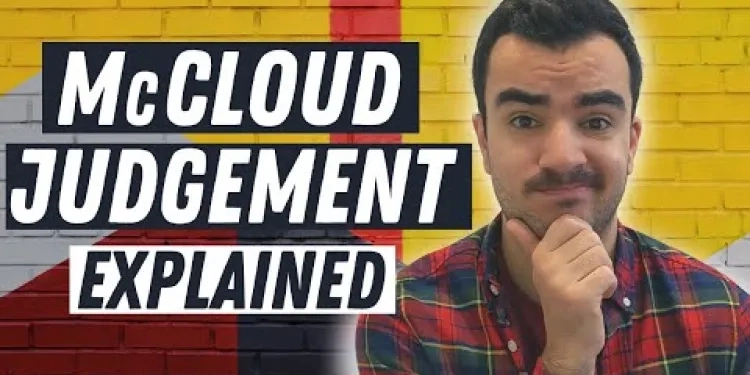
Public Sector Pension Changes | McCloud Judgement | NHS Pensions etc.
Relevance: 24%
-
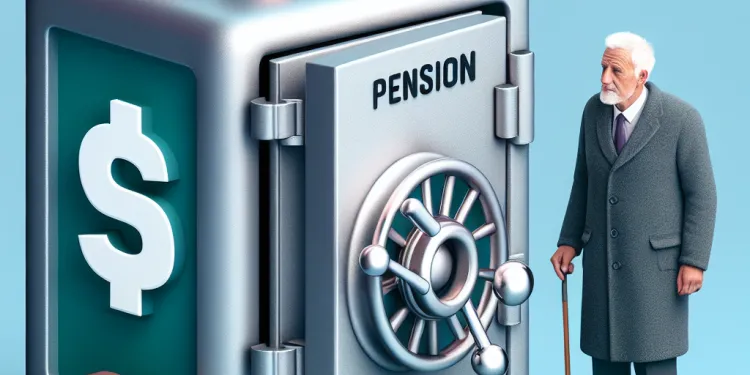
Can pensioners lose all their money if a pension provider fails?
Relevance: 24%
-

Do firefighters have to contribute to their pension schemes?
Relevance: 24%
-

Police Pension Explained
Relevance: 24%
-

Do all UK firefighters automatically join a pension scheme?
Relevance: 24%
-

What is the HMRC Employer Bulletin?
Relevance: 24%
-

Pension Proposals Spark Debate on Retirement Age and Benefits
Relevance: 23%
-

Is there a difference between the basic State Pension and the new State Pension?
Relevance: 23%
-

What is the state pension age in the UK in 2026?
Relevance: 23%
-

Are there free online resources for pension advice?
Relevance: 22%
-

Does the HMRC Employer Bulletin cover changes in employment law?
Relevance: 22%
-

How is the pension calculated for firefighter schemes?
Relevance: 22%
-

Is the Pension Wise service reliable for pension advice?
Relevance: 22%
-

What is the impact on pensioners if a pension system collapses?
Relevance: 22%
-

Are men and women's pension ages equalized?
Relevance: 22%
-

When will the state pension age increase to 67?
Relevance: 22%
-

Can retired firefighters access their pension early on the grounds of ill-health?
Relevance: 22%
Understanding Workplace Pensions in the UK
In the United Kingdom, workplace pensions are a valuable opportunity to save for your retirement, bolstered by contributions from your employer. Since the introduction of auto-enrolment, millions of UK employees have been automatically enrolled into workplace pension schemes, significantly enhancing their retirement savings potential. However, like any financial plan, workplace pensions have their pros and cons. It's crucial to understand both aspects to make informed decisions about your financial future.
Pros of Workplace Pensions
One of the most significant advantages of a workplace pension is the 'free money' from your employer. Employers are required by law to contribute at least 3% of your qualifying earnings to your pension. Many employers are willing to contribute more, matching employee contributions up to a certain percentage, effectively boosting your savings with minimal effort from your side.
Tax relief is another advantage, as contributions to workplace pensions are deducted from your salary before tax, effectively lowering your taxable income and boosting your savings. This means you are paying less tax and getting more bang for your buck, potentially creating a substantial nest egg for the future.
Additionally, due to auto-enrolment, employees benefit from consistent saving habits without having to take any action themselves. Over time, these contributions accumulate, providing a more robust financial cushion upon retirement.
Cons of Workplace Pensions
Despite their advantages, workplace pensions do come with certain drawbacks. One primary downside is the lack of flexibility. For example, unlike other savings investments, your money is locked in until you reach the minimum pension age, currently set at 55 (rising to 57 in 2028). This means you cannot access these funds in case of emergencies or other financial needs before retirement.
Moreover, the performance of your pension pot is subject to market fluctuations, which means the value may go up or down depending on the investment conditions. This introduces a level of risk that might be unsettling for some employees who prefer more stable and predictable savings methods.
Additionally, while auto-enrolment is beneficial for building savings, it does not encourage employees to engage actively in pension management. Many might miss out on optimizing their pension strategies for better long-term outcomes.
Maximising Your Workplace Pension
To get the most out of your workplace pension, it's advisable to check if your employer offers additional contributions if you contribute more than the minimum requirement. Consider this 'free money' and an excellent opportunity to enhance your retirement funds further. Also, keep an eye on your pension statements to monitor performance and adapt your contributions as necessary, possibly seeking professional financial advice to tailor your saving strategy effectively.
Understanding Workplace Pensions in the UK
A workplace pension is a way to save money for when you stop working. In the UK, your boss helps by adding money to your pension too. Since a new rule was made, many workers in the UK now have a workplace pension. This helps them have more money when they retire. But, like anything with money, there are good and bad points. It is important to know both so you can make smart choices about your money.
Pros of Workplace Pensions
The best part of a workplace pension is that your boss gives you extra money for free! By law, your employer must put in at least 3% of your pay into your pension. Some bosses might even add more if you do too. This helps your money grow without you doing a lot.
Another good thing is less tax. Money for your pension comes out before you pay tax. This means you pay less tax and save more money for later.
The new rule also means people save money regularly without having to remember. This helps your money grow nicely over time for when you retire.
Cons of Workplace Pensions
There are some not-so-good things too. One problem is you can’t take the money out until you are older, at least 55 years old, and that will change to 57 in 2028. So, if you need money quickly for something important, you can’t use your pension savings.
Your pension savings can also go up and down in value because they depend on how the market is doing. This can be a bit scary for people who like to know exactly how much money they will have.
While the new rule helps people save, it doesn't make them look carefully at their pensions. Some people might not do enough to make their pension the best it can be.
Maximising Your Workplace Pension
To make the most of your workplace pension, see if your boss will add more money if you do. This extra money can help a lot. It is good to check how your pension is doing by looking at your pension statements. This way, you can decide if you need to change anything. Talking to a money expert can also help you make your pension even better.
Frequently Asked Questions
What is a workplace pension?
A workplace pension is a retirement savings scheme set up by an employer, where both the employer and employee make contributions towards the employee's future pension.
How does a workplace pension benefit employees?
Employees benefit from a workplace pension by getting additional contributions from their employer, tax relief on contributions, and potentially growing their savings over time through investments.
Is it mandatory for employers to offer a workplace pension?
Yes, under UK law, every employer must automatically enroll employees into a workplace pension scheme if they meet certain criteria.
What are the eligibility criteria for automatic enrolment in a workplace pension?
To be automatically enrolled, you need to be at least 22 years old, under the state pension age, earning more than £10,000 a year, and working in the UK.
What is meant by 'free money from your employer'?
The term refers to the employer contributions to your pension scheme, which are in addition to what you contribute, effectively giving you extra money towards your retirement savings.
Can employees opt-out of a workplace pension?
Yes, employees can opt-out of their workplace pension, but by doing so, they will miss out on employer contributions and tax benefits.
How much do employees and employers need to contribute?
The minimum contribution is usually a total of 8% of the employee's qualifying earnings, with at least 3% coming from the employer.
Are there tax advantages for contributing to a workplace pension?
Yes, employee contributions receive tax relief, meaning a portion of your tax money goes into your pension pot.
What are the cons of a workplace pension?
Some drawbacks include potential risks associated with investment performance, fees that may apply, and the fact that funds are generally inaccessible until retirement age.
Can I transfer my workplace pension when I change jobs?
Yes, it is usually possible to transfer your workplace pension to a new employer's scheme or into a private pension pot.
What happens to my workplace pension if I leave my job?
Your pension pot remains yours and continues to grow with any investment returns, but employer contributions will stop unless transferred to another active scheme.
At what age can I access my workplace pension?
You can normally access your workplace pension from the age of 55, although this is set to rise to 57 from 2028.
What is the difference between a workplace pension and a personal pension?
A workplace pension is set up by your employer and includes contributions from both the employee and employer, whereas a personal pension is arranged by the individual and does not include employer contributions.
Is it possible to have both a workplace pension and a state pension?
Yes, you can have both. A workplace pension is separate from the state pension you receive from the government.
How can I check the performance of my workplace pension?
You can check your pension performance by reviewing the annual statement provided by your pension provider and by accessing online portals if available.
What is a Workplace Pension?
A workplace pension is money you save for when you stop working.
Your workplace helps you save this money.
Both you and your boss put money into this savings.
This helps you have money when you are older.
You can use things like pictures or videos to help understand more.
A workplace pension is a kind of savings for when you stop working. It is set up by the place you work. Both you and your boss put money into it to save for your future.
How does a workplace pension help people at work?
A workplace pension helps people at work save money for when they are older and stop working.
Here are some ways a workplace pension can help:
- It saves money for the future.
- The boss often adds money too, so your savings grow faster.
- The government gives extra money too by not taking as much tax.
Tools to help:
- Ask someone at work to explain how your pension plan works.
- Use online calculators to see how much money you might get later.
- Ask a family member or friend to help you understand more if needed.
When you have a pension at work, it means you can get extra money from your boss. You also pay less tax on the money you put in your pension. Over time, your savings can grow because of your investments. This means you might have more money when you are older.
Do bosses have to give workers a pension at work?
Yes, in the UK, bosses must put workers into a pension plan if they meet certain rules.
Who can get automatically signed up for a workplace pension?
Here is who can be signed up for a workplace pension automatically:
- You must be at least 22 years old.
- You are younger than the State Pension age.
- You work in the UK.
- You earn more than £10,000 a year from your job.
Here are some tools that might help:
- Use a calculator to help with numbers.
- Ask an adult you trust to help explain.
- Use pictures to help understand the words.
- Take your time to read slowly.
To be automatically signed up, you must be:
- At least 22 years old
- Younger than the state pension age
- Making more than £10,000 a year
- Working in the UK
If you find reading hard, you can use tools like text-to-speech apps to help.
What does 'free money from your boss' mean?
Sometimes, your boss gives you extra money. This is free money. You do not have to pay it back. Some jobs offer this extra money if you save too. It is like a gift for saving. Tools like pictures or videos can help you understand more.
The term means money your boss adds to your pension. This is extra money that your boss gives on top of what you put in. It helps you save more for when you stop working.
Can workers say no to a work pension?
If you have a job, you might get a pension from your work. A pension is money you get when you stop working.
If you don’t want this money, you can say no. This is called opting out.
Here’s how you can say no:
- Tell your boss you don’t want the pension.
- Fill out a special form if they ask you to.
If you are not sure, you can:
- Ask someone you trust for help.
- Use a computer tool that reads out what words mean.
Yes, workers can choose to leave their work pension. But, if they do, they will not get extra money from their boss and less money from taxes.
How much money do workers and bosses need to pay?
The least amount you need to pay is 8% of what you earn. Your boss pays at least 3% of this.
Do you get any tax benefits when you put money into a workplace pension?
When you save money in a workplace pension, you might pay less tax.
This means you could keep more of your earnings.
Here are some ways to understand it better:
- Ask someone to help explain it.
- Use simple charts or drawings to see how it works.
- Watch videos that explain pensions and tax benefits.
Yes, when you put money into your pension, you pay less tax. Some of your tax money is added to your pension fund.
What are the bad things about a workplace pension?
A workplace pension is money saved for when you stop working. But there can be some bad things too. Here is what you should know:
- Less Money Now: Some of your pay goes into the pension. This means you have less money to spend now.
- Can't Use It Until Later: You can't take the money out until you're older, usually not before 55.
- Risk of Losing Money: Sometimes, if the money is invested in stocks, its value can go up and down.
- Employer Rules: Some jobs might have rules about when you can join their pension plan.
Remember, it's important to ask for help if you're unsure. You can talk to someone you trust or use a calculator online to help understand how much you will save.
There are some things that might not be so good. You could lose money if the investment does not do well. There might also be some costs or fees you have to pay. Plus, you usually cannot use the money until you are old enough to retire.
Can I take my work pension with me when I get a new job?
When you switch jobs, you might wonder if you can take your work pension with you. A pension is money saved for when you stop working.
Here are some simple tips to help you:
- Ask your boss about your pension options when you leave.
- Talk to a money helper if you need more advice.
- Keep important papers safe, like letters about your pension.
These steps can help you understand what to do with your work pension when you change jobs.
Yes, you can often move your work pension to a new employer's plan or into your own private pension savings.
What happens to my work pension if I leave my job?
If you stop working at your job, your work pension is kept safe. Here is what you can do:
- You can leave the money in the pension fund for when you retire.
- You can move the money to a new pension if you start a new job.
If you want help, you can talk to someone at a bank or a pension advisor.
Your pension pot is your money. It can get bigger if the investments do well. But, if you're no longer working for a company, they will stop adding money to it unless you move it to a different active plan.
How old do I need to be to get my work pension?
You can start getting your work pension when you are a certain age. This age is called the "pension age." It is usually when you are 55 years old or older.
If you need help with reading, you can:
- Ask someone to read with you.
- Use a text-to-speech app to listen to the text.
- Look up difficult words using a dictionary.
You can usually start using your work pension when you turn 55 years old. But starting in 2028, you will have to wait until you are 57 years old.
What is the difference between a workplace pension and a personal pension?
A workplace pension is a savings plan for when you stop working. Your boss helps you save.
A personal pension is a savings plan you set up yourself for when you stop working. You save on your own.
Some people find pictures or charts helpful to compare. Others use simple lists to see differences clearly.
A workplace pension is money saved for when you stop working. Your boss helps you save this money. You put in some money, and your boss adds some too.
A personal pension is money you save by yourself for when you stop working. Your boss does not add any money to this savings.
To help understand more, you can use pictures or talk to someone you trust about it.
Can you have both a work pension and a state pension?
Yes, you can have both.
A work pension is money your job saves for you. It's for when you stop working.
A state pension is money the government pays you when you're older.
Having both means you get more money when you stop working.
If you need help with reading, you can ask a friend or use tools like a text-to-speech app.
Yes, you can have both. A workplace pension is different from the state pension that you get from the government.
How can I see how my work pension is doing?
Do you want to know if your work pension is doing well? Here are some easy ways to check:
- Look at your pension statement. It shows how much money is in your pension.
- Ask your work for help. They can explain your pension to you.
- Use the internet to find your pension plan website. Log in to see your pension information.
- Talk to a pension expert. They can give you good advice.
Remember, your pension is money for your future. It's good to check it regularly!
You can see how your pension is doing by looking at the yearly statement your pension company sends you. You can also check it online if possible.
Useful Links
- Ergsy carfully checks the information in the videos we provide here.
- Videos shown by Youtube after a video has completed, have NOT been reviewed by ERGSY.
- To view, click the arrow in centre of video.
- Most of the videos you find here will have subtitles and/or closed captions available.
- You may need to turn these on, and choose your preferred language.
- Go to the video you'd like to watch.
- If closed captions (CC) are available, settings will be visible on the bottom right of the video player.
- To turn on Captions, click settings .
- To turn off Captions, click settings again.
More Items From Ergsy search
-

Workplace Pension UK | Pros and Cons | GET FREE MONEY FROM YOUR EMPLOYER!
Relevance: 100%
-

How to Buy a Car UK | Pros and Cons | PCP vs HP vs Leasing
Relevance: 58%
-

What are the pros and cons of leasing a car?
Relevance: 48%
-

Can my employer provide pension advice?
Relevance: 44%
-

How much does the Workplace Charging Scheme cover?
Relevance: 30%
-

Can I defer my basic State Pension?
Relevance: 29%
-

What is a defined benefit pension scheme?
Relevance: 28%
-

What are my rights regarding workplace safety as a gig worker?
Relevance: 28%
-

NHS Pensions | All you need to know
Relevance: 27%
-

What is the Pension Protection Fund?
Relevance: 26%
-

What is the Workplace Charging Scheme?
Relevance: 26%
-

Will I qualify for the new state pension?
Relevance: 26%
-

What Happens When Pensions Go Bust! | Pension System Collapse UK
Relevance: 26%
-

How does insolvency impact pension funds?
Relevance: 26%
-

Where can I get reliable pensions advice?
Relevance: 26%
-

Are defined contribution pensions protected if the provider goes bust?
Relevance: 26%
-

What role does government regulation play in protecting pensions?
Relevance: 25%
-

What is a defined contribution pension scheme?
Relevance: 25%
-

How will the changes in pension age affect retirement planning?
Relevance: 25%
-

Is the HMRC Employer Bulletin relevant for small businesses?
Relevance: 25%
-

Why do pension funds go bust?
Relevance: 25%
-

NHS Pension - Total Rewards Statement Explained
Relevance: 25%
-

What is the basic pension in the UK?
Relevance: 24%
-

Public Sector Pension Changes | McCloud Judgement | NHS Pensions etc.
Relevance: 24%
-

Can pensioners lose all their money if a pension provider fails?
Relevance: 24%
-

Do firefighters have to contribute to their pension schemes?
Relevance: 24%
-

Police Pension Explained
Relevance: 24%
-

Do all UK firefighters automatically join a pension scheme?
Relevance: 24%
-

What is the HMRC Employer Bulletin?
Relevance: 24%
-

Pension Proposals Spark Debate on Retirement Age and Benefits
Relevance: 23%
-

Is there a difference between the basic State Pension and the new State Pension?
Relevance: 23%
-

What is the state pension age in the UK in 2026?
Relevance: 23%
-

Are there free online resources for pension advice?
Relevance: 22%
-

Does the HMRC Employer Bulletin cover changes in employment law?
Relevance: 22%
-

How is the pension calculated for firefighter schemes?
Relevance: 22%
-

Is the Pension Wise service reliable for pension advice?
Relevance: 22%
-

What is the impact on pensioners if a pension system collapses?
Relevance: 22%
-

Are men and women's pension ages equalized?
Relevance: 22%
-

When will the state pension age increase to 67?
Relevance: 22%
-

Can retired firefighters access their pension early on the grounds of ill-health?
Relevance: 22%


